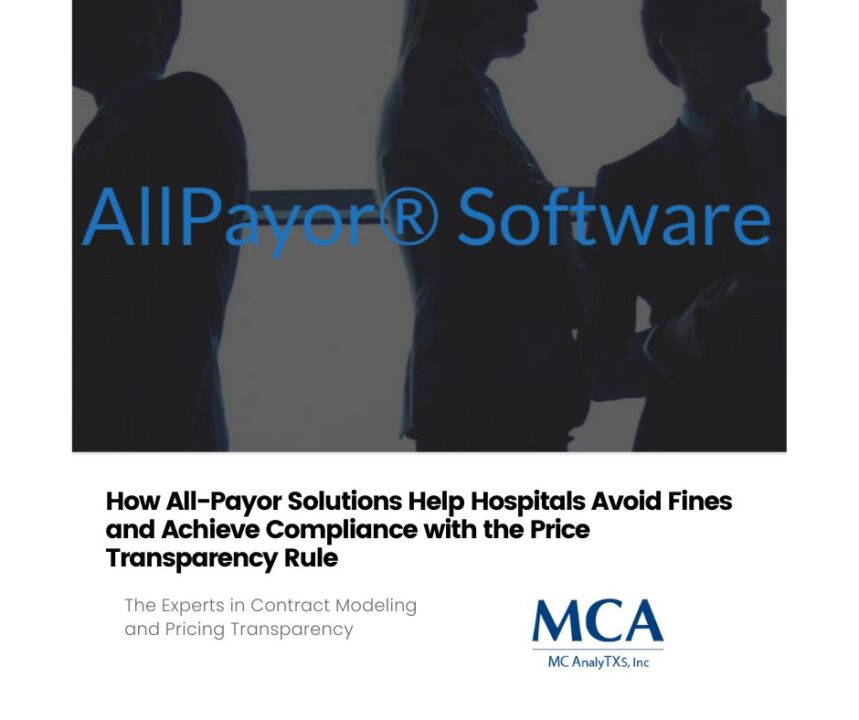
Creating a Personalized and Connected Patient Experience: Tips for Hospitals and Health Systems
June 5, 2023
4 Ways AllPayor® Software Can Benefit Your Healthcare Organization
June 12, 2023Patients are Craving Personalized, Connected Care Experiences – Learn How Your Health System or Hospital Can Improve Patient Engagement and Satisfaction
Patients today have higher expectations for healthcare experiences than ever before. They are seeking personalized, connected care experiences that are tailored to meet their unique needs. As healthcare providers, it’s important to recognize the importance of patient engagement and satisfaction and take steps to improve the overall patient experience. By doing so, you can create a better experience for your patients, build stronger relationships, and ultimately improve outcomes.
In this blog post, we’ll explore some of the key ways you can improve patient engagement and satisfaction at your health system or hospital. From investing in new technologies to empowering patients with better information and resources, we’ll cover a range of strategies and best practices that you can implement to help meet patient expectations and deliver a more personalized experience.
- Focus on connectivity and convenience: One of the most important things you can do to improve patient engagement and satisfaction is to focus on connectivity and convenience. Patients today expect to be able to access healthcare services from anywhere, at any time, and on any device. By investing in digital tools and platforms that enable patients to connect with their healthcare providers and access their health information more easily, you can create a more convenient, seamless patient experience.
- Empower patients with information and resources: Another key element of creating a personalized, connected patient experience is empowering patients with information and resources that help them stay engaged with their healthcare. This could include providing patients with access to online health portals, sending out reminders and alerts via email or text message, or even offering telehealth consultations so patients can connect with their healthcare providers from anywhere.
- Leverage the power of data and analytics: In an increasingly data-driven world, it’s more important than ever to leverage the power of data and analytics to improve patient engagement and satisfaction. By collecting and analyzing patient data, you can gain new insights into patient needs and preferences, and identify areas where you can make improvements to the patient experience. Whether it’s through the use of electronic health records (EHRs), patient surveys, or other data collection tools, there are many ways to harness the power of data and analytics to drive better patient outcomes and experiences.
- Personalize the patient experience: Ultimately, patients want to feel heard and understood by their healthcare providers. One of the best ways to deliver on this expectation is by personalizing the patient experience. This might involve tailoring the patient experience based on individual needs and preferences, such as scheduling appointments at times that are convenient for the patient or providing personalized health education materials. By taking a more personalized approach to patient care, you can build stronger relationships with your patients and help them feel more engaged in their healthcare journey.
- Embrace a culture of patient-centricity: Finally, it’s important to embrace a culture of patient-centricity throughout your health system or hospital. This means placing the patient at the center of everything you do, and ensuring that every member of your team is focused on delivering a better patient experience. From your front desk staff to your healthcare providers to your IT team, everyone should be committed to creating a more personalized, connected, and satisfying patient experience.
Conclusion:
Improving patient engagement and satisfaction is an ongoing process that requires a combination of technology, resources, and a culture of patient-centricity. By investing in digital tools and platforms that make it easier for patients to access healthcare services and information, empowering patients with more information and resources, leveraging data and analytics to gain new insights into patient needs and preferences, personalizing the patient experience, and embracing a culture of patient-centricity, you can deliver the personalized, connected care experiences that patients crave and ultimately improve patient outcomes. At the end of the day, it’s all about creating a better experience for your patients and building stronger relationships that drive better health outcomes for everyone.
To learn more Join our next webinar Thursday, June 22nd at 1 pm CST





